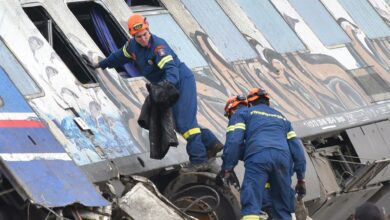At least 3 dead in New Zealand amid rescues in cyclone-battered areas

Sydney, Australia, Feb 15 (EFE).- Cyclone Gabrielle’s trail of destruction across New Zealand’s North Island has left at least three people dead and more than 10,500 displaced as rescuers tried to reach cut-off towns and regions on Wednesday.
A national state of emergency was declared on Tuesday morning for the regions of Northland, Auckland, Bay of Plenty, Waikato, Tairāwhiti, Hawke’s Bay and Tararua on Tuesday, covering the top half of the North Island.
At least three people have died, Emergency Management Minister Kieran McAnulty announced Wednesday in a press conference.
In the west Auckland seaside suburb of Muriwai, a body was found in the search for a volunteer firefighter who was inspecting a home when it was hit by a landslide on Tuesday. Another volunteer who was also in the house remained in critical condition in hospital.
“Sadly we’ve lost (another) two lives – both in the Hawke’s Bay. This is incredibly upsetting for everyone involved,” McAnulty added.
A woman was killed when her home was crushed by a landslide in Putorino, and a body was found on a beach in Napier.
McAnulty said about 300 people had been rescued from rooftops in the Hawke’s Bay – 160 people from one large roof alone – as evacuations continued in the region due to rising floodwaters.
A photo posted to social media asking for help showed a horse stranded on the second-story roof of a building, and was later was confirmed to have died.
In Hawke’s Bay alone, more than 9,000 have been displaced, with 10,500 across the country.
The number is expected to rise as some areas remain cut off due to landslides and debris severing roads and bridges, with ongoing power, internet and phone service outages.
“What is of concern is that there are still areas that don’t have power, there are still areas that don’t have communications,” McAnulty said.
The northern coastal Hawke’s Bay town of Wairoa remained isolated with no phone service and only enough food for one day and enough drinking water for two, authorities said. Its river burst its banks overnight.
Gisborne, in Tairāwhiti region, was also still cut off, although some power had been restored and the airport cleared for defense force planes to land with supplies. There were also concerns for water shortages there.
Across the Coromandel Peninsula, east of Auckland, the roading network had been “decimated,” and in Northland region there were still massive power cuts, McAnulty said.
In the central North Island near the town of Tūrangi, the cyclone cut a path through a massive pine forest, snapping trees in half as it went, with one resident saying it sounded like “the loudest gunshots you’ve ever heard,” and another describing it as “more like a tornado,” Stuff reported.
Meanwhile, Britain’s Princess Anne, sister to King Charles, met with first responders and Prime Minister Chris Hipkins in the Beehive’s bunker in Wellington on Wednesday as she undertook a scheduled visit to the country.
“I have been given the opportunity to visit the national disaster and crisis headquarters today and I am impressed by the major efforts being undertaken by first responders, local and national agencies to ensure the best possible support for everyone, especially those still at risk,” she said in a statement posted by the NZ Defense Force.
“I admire the courage of the people of Aotearoa during this alarming and difficult time. You should all be proud of the resilience, strength and care for your communities you are showing in the face of adversity. Kia Kaha.”
More than 250 NZDF personnel were participating in the cyclone response.
Hipkins has called Cyclone Gabrielle the most significant weather event in New Zealand this century, with Climate Change Minister James Shaw point out that “this is climate change.”





